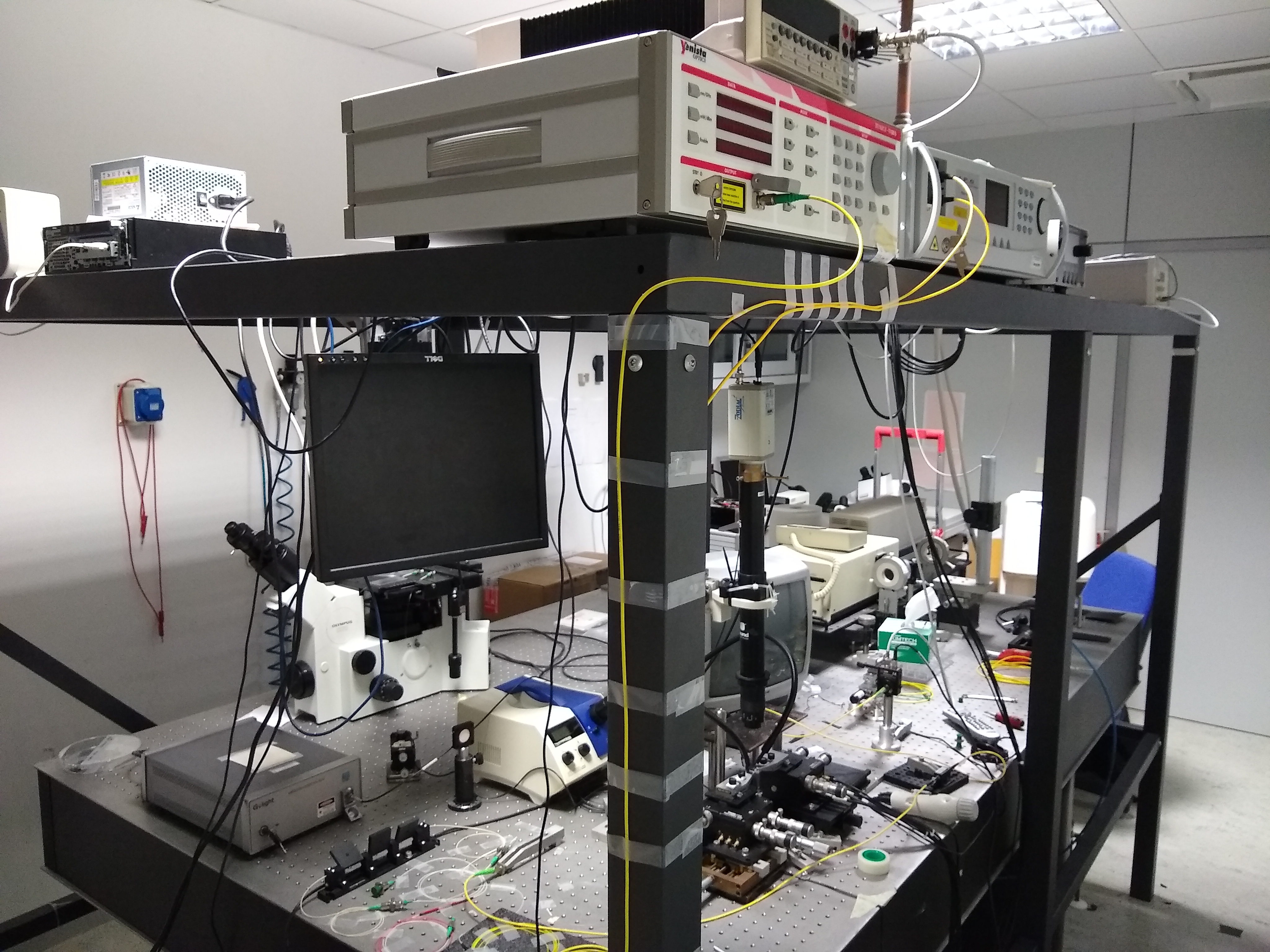 The “Quantum Lab” is currently dedicated to perform two type of activities related, name suggests, to the study of quantum nature of light.
The “Quantum Lab” is currently dedicated to perform two type of activities related, name suggests, to the study of quantum nature of light.
The first one concerns the study of entanglement applied to single photons, where two internal degrees of freedom of the same photon, are entangled. The latter is called Intra-particle Entanglement. In order to prove the presence of the entanglement, a Bell’s test is performed by using a bulky double Mach-Zehnder interferometer. The photons are then detected by the use of Single-Photon Avalanche Diodes (SPADs): the signals produced are then collected by a computer and an FPGA. The alignment of all the optical devices is performed using a low power green laser (546nm).
The second activity concerns the study of integrated optical components. In particular, the experimental setup is designed to perform measurements varying both the working wavelength and the voltage applied to the metal pads of the device under examination. The wavelength range is from 1490nm to 1640nm with a resolution of 1pm. In the standard setup, it is used a laser beam with a power of 8mW, that can be amplified up 5W through an Erbium Doped Fiber Amplifier (EDFA). Data are collected by a computer that acquires the signals through a PicoScope oscilloscope and it is able to control the supplied devices, such as the tunable laser and the voltage generator. The generator is capable to apply up to 250V and can be limited in current. This instrument can also measure voltage and current and hence is very useful for measuring IV characteristic of different devices, like p-n junctions. Therefore, this setup is useful to perform several types of measurements such as: measurement of propagation losses, measurement of the transmission spectrum of a microresonator, measurement of optical bistability and measurement of nonlinear effects such as Direct Current Kerr effect.
The equipment of the lab is the following:
Light Sources: Near-infrared tunable LASER (1490nm - 1640nm), Yenista OPTICS, TUNICS – T100S; Erbium-doped fiber amplifier (EDFA) 5W (1535nm – 1565nm); 840nm SLED Light Source, Golight; Cold Light Sources, ZEISS KL 1500 LCD.
Detectors: Near-infrared detector, InGaAs Switchable Gain Detector, PDA20CS(-EC), Thorlabs, 800nm - 1700nm; Visible camera, Zodiac.
Fiber based devices: Single Mode Tapered and Lensed Fibers; Manual Fiber Polarization Controllers, Three-Paddle Controllers Thorlabs; IR Variable Optical Attenuator (VOA); Optical Isolator C band; 50:50 Fiber optic coupler.
General Optical/Optomechanical Components: Optical Table; 3-Axis stages to move the sample at micro-metric precision in the three directions, 3-Axis NanoMaxTM Flexure Stages Thorlabs; Piezo-electric controller for one 3-Axis stage.
Electronics: PC Oscilloscope, PicoScope 4000 Series; Voltage generator, KEITHLEY 2400 Source Meter; Metal tips with two 3-Axis stages; Computer.

